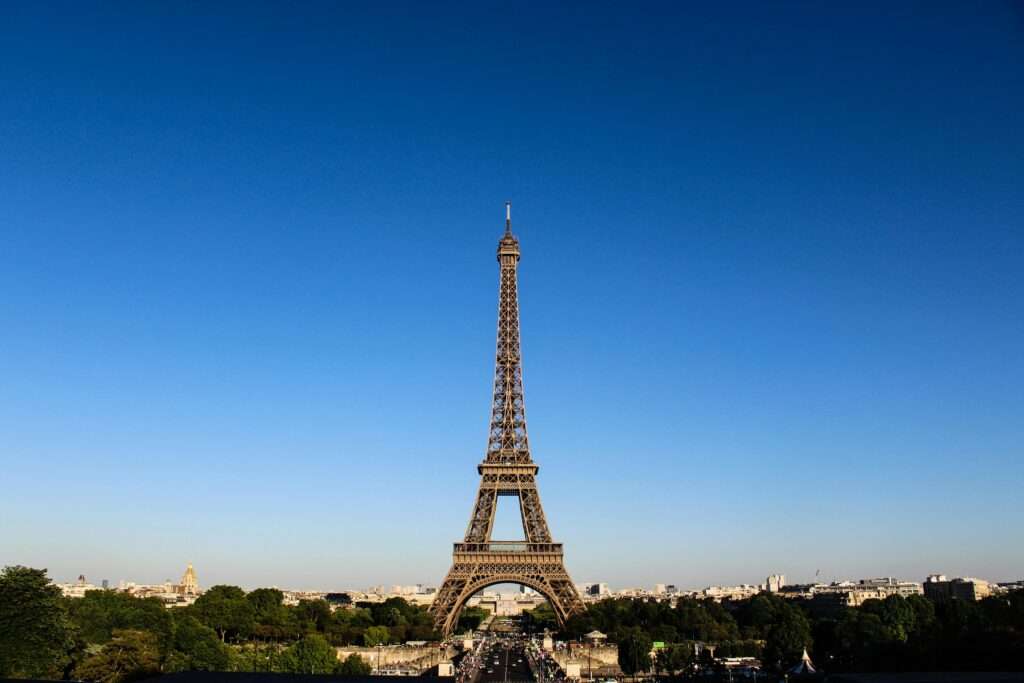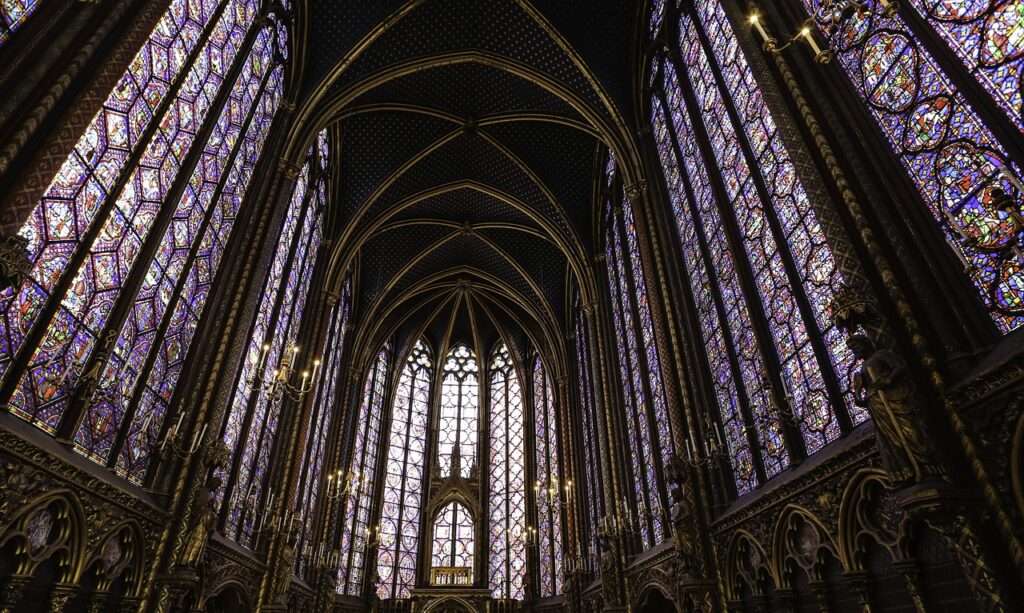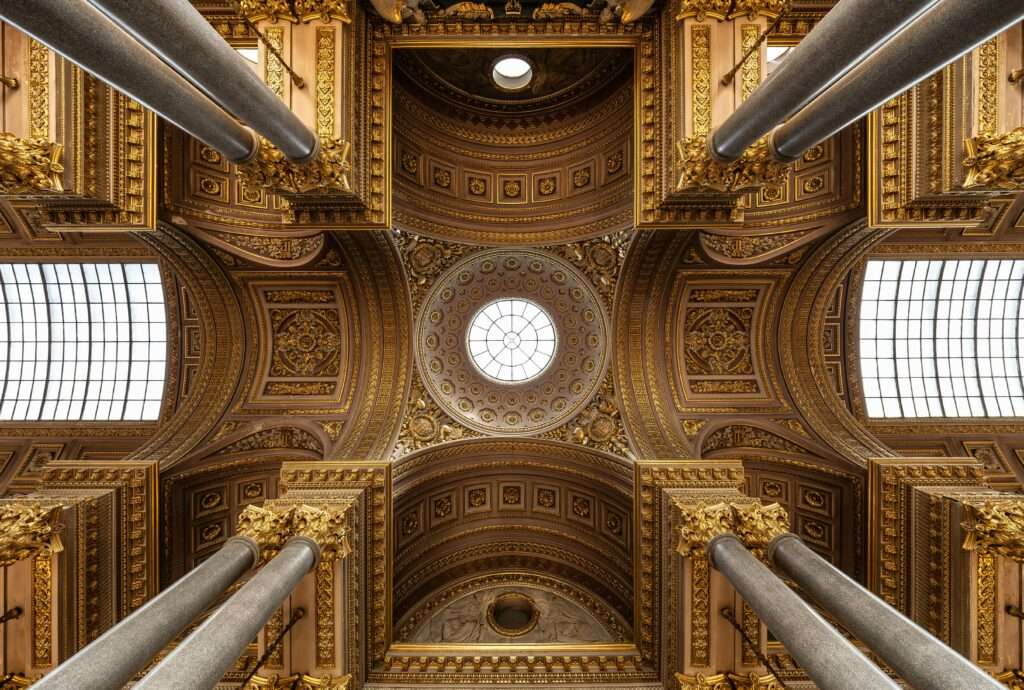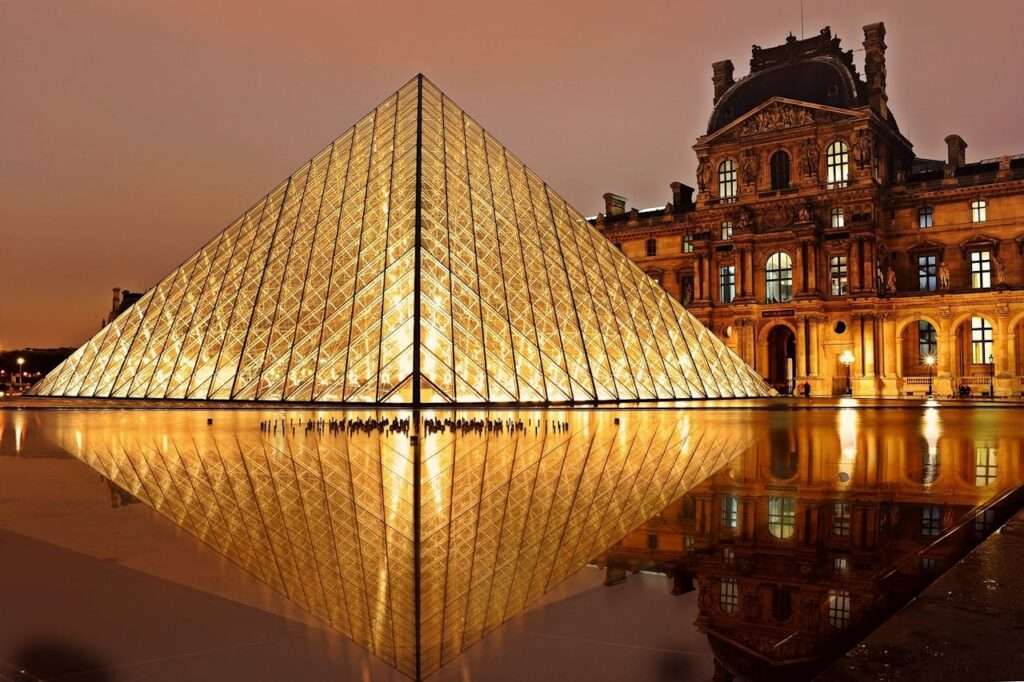Paris, the City of Light, has long been celebrated for its remarkable monuments that tell the story of its rich history, culture, and art. From world-renowned landmarks to hidden gems, the monuments of Paris attract millions of visitors each year, offering glimpses into the city’s glorious past and artistic present. Whether you’re a first-time visitor or a seasoned traveler, exploring these iconic sites is an essential part of the Parisian experience.
In this blog, we’ll delve into the most famous monuments in Paris, offering you a comprehensive guide to these awe-inspiring structures and their unique significance.
1. The Eiffel Tower: The Symbol of Paris

No list of Parisian monuments would be complete without the Eiffel Tower. Standing proudly at 324 meters tall, this iron structure is the symbol of Paris and perhaps the most recognizable monument in the world. Constructed by Gustave Eiffel for the 1889 World’s Fair, the Eiffel Tower was originally meant to be a temporary structure. However, its immense popularity ensured its permanent place in the Parisian skyline.
Visitors can take elevators or climb the stairs to the observation decks, where they’re treated to panoramic views of the city. At night, the Eiffel Tower becomes even more magical as it lights up and sparkles for five minutes every hour on the hour, making it a romantic spot for couples and a dazzling sight for all.
Why It’s Famous: The Eiffel Tower symbolizes France’s industrial prowess and ingenuity, and its global appeal has made it a must-see for every visitor to Paris.
2. The Louvre Museum: Home to Masterpieces

The Louvre, one of the largest and most visited museums in the world, is housed in a former royal palace. Its glass pyramid entrance, designed by architect I. M. Pei, is a modern addition to the historic museum and a work of art in its own right. But the true treasures lie inside: the Louvre’s vast collection includes thousands of works spanning thousands of years, from ancient civilizations to the 19th century.
Among its most famous pieces is Leonardo da Vinci’s Mona Lisa, which draws crowds of admirers daily. Other must-see works include the Venus de Milo, The Winged Victory of Samothrace, and masterpieces by artists like Rembrandt, Michelangelo, and Vermeer.
Why It’s Famous: The Louvre is renowned for its unparalleled collection of art and artifacts, as well as its role in art history as a center of cultural preservation and scholarship.
3. Notre-Dame Cathedral

Notre-Dame de Paris, a towering example of French Gothic architecture, has stood on the Île de la Cité for over 850 years. Famous for its magnificent facade, rose windows, and flying buttresses, this cathedral has been a site of great religious and historical significance. Though tragically damaged by fire in 2019, restoration efforts are underway, and the cathedral continues to be a symbol of resilience and faith.
Visitors can explore the interior (once reopened), including the breathtaking stained glass windows and intricate sculptures. One of the most popular activities is climbing the 387 steps to the top of the bell towers, where you’ll be rewarded with an incredible view of Paris and the chance to get up close to the cathedral’s famous gargoyles.
Why It’s Famous: Notre-Dame is an architectural marvel and has played a central role in the history of Paris, from royal ceremonies to its place in Victor Hugo’s novel The Hunchback of Notre-Dame.
4. Arc de Triomphe: A Monument to Victory

Commissioned by Napoleon in 1806 to honor his military victories, the Arc de Triomphe is one of the most recognizable landmarks in Paris. It stands at the western end of the Champs-Élysées, offering a dramatic focal point for one of the most famous avenues in the world. Beneath the arch lies the Tomb of the Unknown Soldier, a tribute to those who died in World War I, and an eternal flame that is rekindled every evening.
The Arc de Triomphe is also a great place to catch stunning views of Paris. Climb to the top, and you’ll be rewarded with a 360-degree view of the city, including the Eiffel Tower, the Louvre, and the surrounding avenues.
Why It’s Famous: The Arc de Triomphe stands as a symbol of French patriotism and military strength and is an essential stop for anyone interested in the history of France.
5. Sainte-Chapelle: A Jewel of Gothic Architecture

Tucked away on the Île de la Cité, Sainte-Chapelle is often overshadowed by Notre-Dame, but it’s one of the most breathtakingly beautiful monuments in Paris. Built in the 13th century by King Louis IX to house his collection of relics, including what was believed to be Christ’s Crown of Thorns, Sainte-Chapelle is famous for its stunning stained glass windows, which depict over 1,100 scenes from the Bible.
The chapel’s walls seem to disappear as light floods through the colorful glass, creating an almost ethereal atmosphere. The beauty and craftsmanship of Sainte-Chapelle make it a must-visit for anyone interested in Gothic art and architecture.
Why It’s Famous: Sainte-Chapelle is celebrated for its stunning stained glass windows, which are among the finest examples of Gothic art in the world.
6. The Panthéon

Located in the Latin Quarter, the Panthéon was originally built as a church dedicated to St. Genevieve, the patron saint of Paris, but it was later repurposed as a mausoleum for France’s most important historical figures. Among those entombed in its crypt are Voltaire, Rousseau, Victor Hugo, and Marie Curie.
The Panthéon’s impressive neoclassical facade and dome are architectural marvels, and inside, visitors can explore the tombs of the great men and women who shaped France’s history and culture.
Why It’s Famous: The Panthéon is not just a monument to architecture but also a tribute to the intellectual and cultural heritage of France.
7. Palace of Versailles

Just outside Paris, the Palace of Versailles is one of the most opulent monuments in the world. Once the residence of King Louis XIV, the Sun King, the palace is a symbol of the absolute monarchy that reigned over France before the Revolution. Its Hall of Mirrors, with 357 mirrors reflecting the light of gold and crystal chandeliers, is one of the most iconic rooms in European history.
The expansive gardens of Versailles are equally impressive, designed by André Le Nôtre to showcase symmetry, order, and beauty. The palace and its grounds provide a fascinating glimpse into the lavish lifestyle of French royalty.
Why It’s Famous: Versailles is a testament to the grandeur of French monarchy and remains one of the most visited monuments in France due to its historical significance and sheer beauty.
8. Sacré-Cœur Basilica
Perched atop Montmartre, the highest point in Paris, Sacré-Cœur Basilica is one of the city’s most distinctive landmarks. Its white domes stand out against the Paris skyline, and from its steps, visitors are treated to one of the best panoramic views of the city.
Built in the 19th century, the basilica’s design is a blend of Romanesque and Byzantine styles, and its interior is equally stunning, featuring one of the largest mosaics in the world. Montmartre itself is an artistic neighborhood, once home to greats like Picasso and Van Gogh, making a visit to Sacré-Cœur a cultural as well as a spiritual experience.
Why It’s Famous: Sacré-Cœur’s stunning hilltop location and beautiful design make it a beloved Parisian monument and a place of reflection.
9. Opéra Garnier
The Opéra Garnier, also known as Palais Garnier, is one of the most opulent buildings in Paris. Designed by Charles Garnier and completed in 1875, this baroque masterpiece is a marvel of architecture and craftsmanship, featuring a grand staircase, a chandelier weighing several tons, and ornate sculptures and paintings.
The opera house is famous for inspiring Gaston Leroux’s The Phantom of the Opera and continues to be a venue for ballet, opera, and theater performances today. Visitors can tour the building to admire its beauty, from the grand foyer to the auditorium’s ceiling, painted by Marc Chagall.
Why It’s Famous: Opéra Garnier is a symbol of Parisian culture, elegance, and artistic tradition, offering a glimpse into the city’s high society and love of the performing arts.
10. Place de la Concorde: A Historic Square
The largest public square in Paris, Place de la Concorde is steeped in history. During the French Revolution, it was the site of the guillotine where King Louis XVI, Marie Antoinette, and many others met their fate. Today, the square is dominated by the Luxor Obelisk, a 3,300-year-old monument from Egypt, as well as ornate fountains and statues representing French cities.
Why It’s Famous: Place de la Concorde is a place where history and beauty collide, offering a space to reflect on the past while enjoying its grandeur.
Conclusion
Paris’s famous monuments are more than just structures; they are symbols of the city’s history, culture, and enduring allure. Whether you’re drawn to the architectural splendor of the Eiffel Tower, the artistic treasures of the Louvre, or the peaceful beauty of Sacré-Cœur, each monument offers a unique experience that adds to the magic

